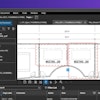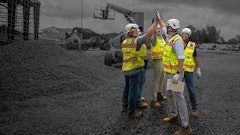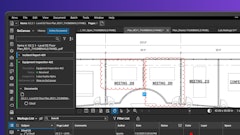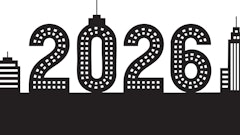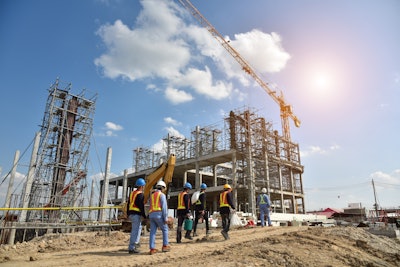
Don’t underestimate what technology can do for a construction business. That’s the overriding message from a newly released benchmarking report covering the architecture, engineering and construction (AEC) industries.
Findings from the 2025 AEC Inspire Report from Unanet [of which I am co-author] show a clear performance divide between AEC firms that are mature in their use of technology and those that are not. Compared to their less tech-focused peers, tech-mature AEC firms “win more bids, deliver more projects on time, accelerate cash flow and more frequently report positive indicators of organizational growth and profitability,” states the report, which is based on a survey of more than 300 senior-level AEC industry executives.
Tech-mature firms — those that are more advanced in terms of their technology integration, tools, training and processes — hold a decided edge in key areas like bid win rate and year-over-year revenue. Even the seemingly modest three-point advantage they hold in resource utilization rate can translate into hundreds of thousands of dollars in revenue for a midsize construction firm.
“Whether the goal is to increase revenue, enhance valuation, or scale sustainability, this year’s report highlights that investing in technology — from the tools to training and processes — is more critical than ever for firms seeking a major competitive advantage,” the report asserts.
A large share of the AEC execs we surveyed — 83% — categorized their firm as either somewhat or very tech-mature. And artificial intelligence is among the tools they’re using to climb the tech-maturity curve. More than half (55%) of AEC firms said they employ AI in some capacity, while 28% are looking at using AI but not currently doing so. We expect the share of companies not using AI — currently 16% — to shrink rapidly as more firm leaders recognize what it can do for their business. Among those employing AI, the most common use cases come in the areas of business development and IT.
One noteworthy red flag regarding AI: Two-thirds of the firms that use it lack clear policies and procedures for its governance, exposing them to risks related to data stewardship, accuracy, security and ethics.
Proposal win rate is another key area where tech-mature firms maintain an advantage over their less tech-mature peers. On the whole, AEC firms win 52% of their bids. Companies that identify as tech-mature win 55% of their bids, compared to 49% among less tech-mature firms. Apparently, tech tools — a high-quality customer relationship management (CRM) system, for example — do make a substantial difference in growing a business.
As valuable as a CRM system and other business development tools can be to a firm, the report found that 47% of respondents suffer from poor adoption rates with their business development tools, and 20% lack a CRM system entirely. “These gaps in usage, access, and availability of business development tools and data carry significant implications for firms’ abilities to optimize sales activities,” we conclude in the report.
Attracting, retaining and managing talent is another area where many AEC firms struggle, according to the report. Two-thirds of survey respondents cite talent challenges as one of their top three industry concerns. Tech capabilities can help them address talent-related challenges by providing clear, timely insight into their current project backlog, incoming pipeline and overall resource capacity. That gives them a better understanding of their hiring needs, so they can get out into the talent market faster than their competitors.
An Up-Close Look at Construction Firms
Among the three industries covered by the report, the “C”, construction, shows the highest level of overall business optimism: 35% of respondents in construction categorized their business outlook as “very optimistic.” Some other noteworthy report findings on the construction front:
- 63% of construction firms identify economic uncertainty as their top business challenge, compared to 47% of architecture firms and 44% of engineering firms.
- More than their architecture and engineering counterparts, construction firms prioritize revenue generation, operational efficiency, and workforce performance.
- Construction firms operate with lower overhead rates and slightly higher labor utilization rates than architecture and engineering firms. They are five times more likely to generate at least $250,000 in revenue per employee. Not surprisingly, about 50% of construction firms express satisfaction with their resource management tools, far exceeding their peers in architecture (26%) and engineering (18%). Construction firms on the whole report higher average revenues per employee than their cohorts in architecture and engineering.
- While firms in the architecture and engineering sectors on average produced more proposals in the past 12 months compared to the year prior, construction firms on average produced fewer.
- On the talent front, architecture and engineering firms are likelier than construction firms to hire recent graduates, while construction firms are likelier to consider hires from outside their industry.
- Construction firms realize revenue faster than their architecture and engineering peers, thanks to quicker turnaround on the accounts receivable front.
All these pieces add up to a promising near- and long-term outlook for the construction industry as a whole — and especially for companies that are mature in their use of AI and other technologies.



